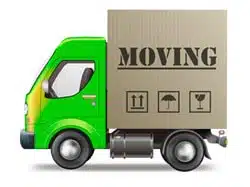Unfortunately, seamless is a word that I’m really reluctant to use when moving to a new machine. We can move most of what you want, but the steps to do so aren’t what I’d call “seamless”.
The key phrase is “from scratch”
Migrating straight from the external hard drive isn’t really an option. Unfortunately, that’s not really what backups are for. Yes, you may be able to use your backups for part of what will come next. But once again, seamless, it ain’t; particularly since you’re going from 32 to 64-bit.
Since Windows will most likely be pre-installed on your new machine, step one is going to be reinstalling all of the applications you care about. Some will be the same versions, but others will be new 64-bit versions. In all cases, though, these are new installs from scratch, from the original download or from the original installation media.
 Next, you’ll move your data. Without knowing the email program you use, it’s difficult to say exactly what steps you’re going to need to take. If you’re using the same email program on both the old and the new systems, it’s typically (but not always) just a matter of copying the appropriate files or folders to the appropriate location on the new machine, and then possibly tweaking a setting or opening a file.
Next, you’ll move your data. Without knowing the email program you use, it’s difficult to say exactly what steps you’re going to need to take. If you’re using the same email program on both the old and the new systems, it’s typically (but not always) just a matter of copying the appropriate files or folders to the appropriate location on the new machine, and then possibly tweaking a setting or opening a file.
If you’re using a different email program, then things absolutely get more difficult, as you’ll have to both move and convert. This may be the case when people move from Outlook Express to something newer.
Bookmarks, address books, and other kinds of customizations are typically moved by exporting them to a file on the old machine, and then importing them into the new machine, into the equivalent application. This doesn’t always work as not all programs support import and export. Then you’re faced with simply rebuilding your customizations or at least the ones that matter, again, from scratch.
Other data files like documents and pictures and the like can simply be copied from one machine to another. This is also where the backup can sometimes come in handy. Since those types of files are not affected by the operating system change, they can be recovered from the backup image or from copies.
The problem is that switching to a new machine with a new operating system and new processor type is actually a pretty big deal, and has ramifications for almost all of your installed software.
As a result, that move is rarely seamless. Sorry.

Perhaps “How *do* I migrate…”
I’m facing this at work, migrating a dozen users from XP to 8.1 with Classic Shell. The typical system has about 40 applications installed, so it’s a lot of work. Most of the data is stored on the server, but the re-installed applications have to be configured to point to the server.
Perhaps the biggest challenge is moving from Eudora to Outlook for email — while trying to keep 10 years of history.